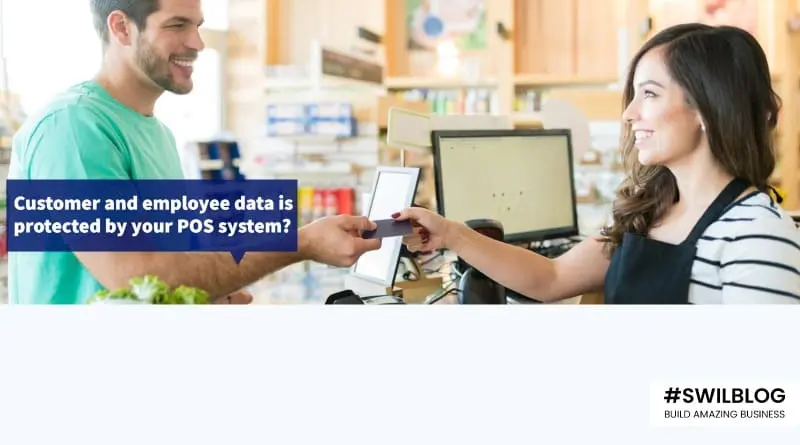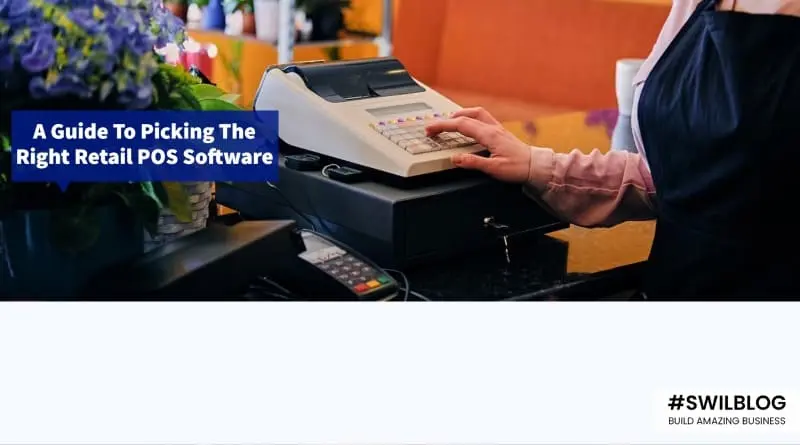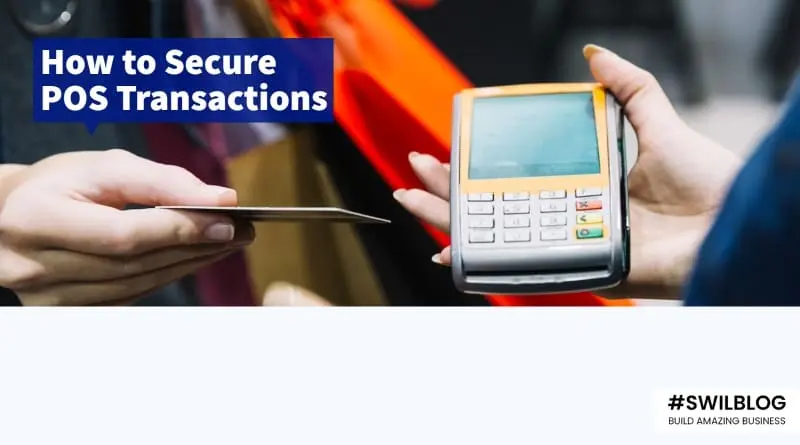There are a ton of risks involved in the retail business environment. Businesses need to take care of a lot of data security-related factors. It is an issue that needs to be given a lot of importance. Let’s explore this topic in-depth and a list of actions that can help keep your customer and employee data safe in your POS.
Article Content-
- Meaning of Point of Sale (POS)
- How important is POS security?
- Different types of POS security threats
- Points to keep in mind while ensuring POS security
- How SWIL helps ensure POS security of your business
- Conclusion
Meaning of Point of Sale (POS)
Point of Sale (POS) is that corner of the store where customers go to purchase the product they like and make a transaction for the same. Customers need to pay for the products at the POS system. The system consists of both hardware as well as software. It is used to make and track financial transactions. A POS system can consist of a credit/ debit card terminal, a desktop- based virtual terminal or an app. The features and type depends as per the type of business. It also depends on the unique requirements and needs of the business.
How important is POS security?
POS security means a secure environment for your customers where they can purchase and complete their transactions. Your POS system must be capable of preventing unauthorized users from accessing your customer’s personal information. It also involves restricting access to sensitive data such as credit or debit card details and other transactional data. POS systems are very susceptible to cyber-attacks if not looked after well. They can attack POS systems via apps that store data related to customer purchases and transactions.
Different types of POS security threats
POS systems are vulnerable to cyber- attacks by dangerous hackers. They are used to steal customer’s credit and debit card details and hack into their banking systems. There are several factors that lead to cyber- attacks. These include unsecured server, spam third- party integrations and outdated software. Sometimes due to spammy links, your POS system can be left open for cyber- attacks. There are several security threats that can attack your POS system. To name some, tampering with hardware devices, phishing, malware attacks, employee theft and brute force attacks.
Let’s explore each of these in a detailed manner below:-
1. Theft by employee
Sometimes, employees and sales agents turn out to be the biggest threat for your business. Bad intentions of stealing or selling data for money is the primary motive behind this. Hackers bribe employees into borrowing POS devices and loading them with card- skimming software. This leads to losses of business which include monetary as well as the brand name. Large businesses have been affected on a wide scale when it comes to employee theft. However, it doesn’t mean small businesses aren’t targeted as well. POS security has become increasingly vital for small businesses.
2. Malware attacks
Malware attacks on POS terminals or online stores mainly take place due to poor security systems. It penetrates through the system and searches payment data which is then sent to the hacker in an unencrypted format. Hackers get into unprotected databases through malware. Credit card and other personal financial information of customers is collected and sold in the black market. It is also used to commit identity theft. Malware is very discrete and difficult to detect. The fraud could be taking place quietly for months or years before getting noticed. Some malware types include Trojan, spyware, keyloggers, skimmers and ransomware.
3. Hardware tampering
Hackers can easily tamper with POS system hardware devices such as card readers for stealing customer data. Business owners need to be careful with this. Hardware devices should be regularly inspected and tightly sealed. However, certain POS hardware such as self- serve kiosks become extremely vulnerable to tampering threats.
4. Phishing
Phishing is a cyber- threat that involves the hacker sending an email asking for vital information such as account numbers to transfer money. These include lottery won messages, bonus messages, cashbacks and much more. It tricks users into giving their personal details to the hacker. Instead, money is taken out. It manipulates someone into doing something that lets the hacker in their system.
5. Brute force attacks
In this cyber theft type, the hacker tries to guess the password or username that is used to log into the POS system. They then gain access to the system and steal customer data. Specialized programs are used to make hundreds of guess attempts within a second. It is highly recommended to set a strong password to reduce the likelihood of being hacked. Also, set restrictions on the number of attempted logins.
Points to keep in mind while ensuring POS security
It is essential for businesses to take a ton of safety measures to improve POS security. This will help prevent malware infections and data breaches. Let’s explore the ways businesses can take care of POS security:-
- Regularly check for tampering of hardware devices such as cables, card readers, etc. to ensure safety.
- Use EMV payment tools instead of card swipe. Hackers can easily alter credit cards to direct POS systems to download malware.
- Ensure POS systems are updated with the latest updates from time to time. But ensure it is an appropriate update authorized by your solutions provider.
- Install malware and antivirus protection on your POS devices. Also make sure all your store devices are connected to the network.
- Set access permissions and restrictions in your software. Only relevant employees should be able to access the system. Maintain a record of who all have access to what to trace any breaches.
- Use strong passwords that have at least 12 characters, combination of upper and lowercase, and should contain numbers and special characters. Ensure you update them from time- to- time. You can also use two- factor authentication for the same.
- Educate your employees on cyber security. Help them understand the difference between malicious emails and texts. Employees should be trained properly on identifying phishing and other scams.
- Make careful and use only internal and segmented networks for payment processing and work- related internet use. Hackers can easily exploit a system and gain access to customer payment data.
- Stay vigilant and keep a track of all activities going on in your system. Identify any abnormalities in your daily activity. You need to take appropriate action in case a cyber- threat happens.
How SWIL helps ensure POS security of your business
POS systems have made retailing much easier than it used to be. If you are looking for POS software for your retail, wholesale, or distribution business, SWIL is here for you. Our software automates, secures, and simplifies your business. SWIL comes with a smart POS solution for all retail and wholesale businesses. It streamlines business processes and helps companies push the boundaries of their business. It also enhances their business solutions. For more information on POS software, check out the SWIL website today!
Conclusion
POS security has been the biggest challenge in the retail world. Due to the large volume of sensitive data, who knows what is known, and the unknown threat could attack your system. Despite all the challenges, there is still hope present for retail businesses. Make use of robust and secure software solutions that can save you from potential damage. By implementing measures to protect your POS system, businesses can largely reduce the chances of experiencing a cyber attack.








